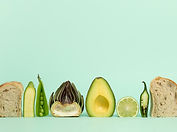Nausea and Vomiting During
Cancer Treatment

Nausea and vomiting are the most common side effects in patients undergoing cancer treatment.
Nausea is the feeling of a queasy stomach, with or without a sense of vomiting. Vomiting is the forceful expulsion of the contents of the stomach or small bowel through the oral cavity or the nose. You might have more nausea than vomiting.
Uncontrolled nausea and vomiting can affect the nutrition status since it can make you not eat or drink enough, causing weight loss and malnutrition, dehydration, treatment breaks, unplanned hospital admissions, reopening surgical wounds, and fatigue.
Interventions to manage nausea include medications, nutrition therapy, acupuncture and acupressure, relaxation methods such as guided imagery and hypnosis, and behavior therapy [2].
It’s essential to manage your nausea and vomiting so you can eat and drink and have a better quality of life.
Nutrition Strategies for Eating with Nausea
-
Eat frequent small meals and snacks throughout the day.
-
Avoid skipping meals and eat slowly. An empty stomach may make nausea worse.
-
Avoid foods with a strong smell. Strong odors may stimulate the vomiting reflex.
-
Try eating outside or in a room away from the kitchen.
-
Choose room temperature or cold foods since they usually do not have strong odors.
-
If you have bad taste in your mouth:
-
Suck on hard candy, such as peppermint or lemon.
-
Try baking soda and salt mouth rinse before and after meals – Mix 1 liter of water, 1 teaspoon salt, and 1 teaspoon baking soda.
-
-
You may need to rest, sit up or recline with your head raised for at least 30 minutes after eating.
Nutrition Strategies for Drinking with Nausea
-
Sip on beverages - at least 8 to 10 (8-ounce) cups of liquids per day.
-
Drink fluids when you are able. It might help to take small sips every 15 to 30 minutes.
-
Don’t drink anything for at least 1 hour before and 1 hour after you eat.
-
Drink slowly and in small amounts, then try to drink more as you start to feel better.
-
Try liquids in the form of ice chips or frozen juice chips, which can be slowly dissolved in your mouth.
Nutrition Strategies When Vomiting
-
If you have frequent vomiting, don't eat for 4 to 8 hours. In the meantime, take small sips of water or try a light-colored sodas that have lost their fizz.
-
When your stomach settles down, begin replenishing some of the fluids and minerals you may have lost due to vomiting, and try starting with one teaspoon of ice every 10 minutes, then increase to 1 tablespoon every 20 minutes.
-
Try sipping chicken or vegetable broth, a sports drink, or small bites of gelatin; it will help you stay hydrated. Do not consume only clear liquids for more than 2 days in a row, as they do not have enough nutrients.
What to Eat with Nausea and Vomiting
Low-fat foods are generally recommended since they clear the gastrointestinal tract more quickly. Plain and non-odorous
Try eating but start with foods that have a lot of fluid in them. Good examples are soup, gelatin, and ice pops. If this goes well, you can try soft, bland foods, dry, starchy, or salty foods every few hours during the day.
-
Crackers, pretzels, dry toast, and English muffin.
-
White rice, potatoes, and plain noodles.
-
Cream of wheat, oatmeal, and grits.
-
Cold cereals such as rice and corn cereals.
-
Baked or broiled chicken (without skin).
-
Cold meats and fish salads.
-
Eggs cooked without fat.
-
Tofu and soy-based foods.
-
Cottage cheese.
-
Applesauce.
-
Bananas.
-
Yogurt.
What to Drink with Nausea and Vomiting
To control nausea, drink cold drinks as they might be better tolerated. Try to drink small amounts of liquids slowly, then increase the amount as you are able.
-
Water
-
Electrolyte drinks
-
Apple, cranberry, or grape juice
-
Bouillon
-
Ice pops and sherbet
-
Iced teas, especially ginger tea
-
Light-colored sodas like Sprite, Ginger Ale, and 7UP
Oral Nutrition Supplements (ONS)
Juice-type commercial protein supplements blended with ice and eaten with a spoon.
-
Ensure Clear
-
Boost Breeze
-
Fortijuice
Oral Rehydration Solutions (ORS)
Including standard World Health Organization ORS or commercial ORS may be appropriate to prevent dehydration.
-
Rehydralyte
-
Ceralyte
What Causes Nausea and Vomiting
Different types of nausea and vomiting are caused by many chemotherapy drugs, tumors in the gastrointestinal tract, tumors in the brain, and other conditions [3].
Radiation therapy to the gastrointestinal tract, liver, brain, or whole body is likely to cause nausea and vomiting. A higher dosage of chemotherapy and radiation can also worsen your side effects [4].
Medicines, constipation, stress, anxiety, and even the thought of having chemotherapy can also provoke nausea and vomiting.
Other causes of nausea are food poisoning, infection, pregnancy, stomach, and intestinal problems, alcohol, migraine headaches, and diseases, including cancer [5].
Foods and Drinks to Avoid
Some foods can make nausea worse.
-
High fat and fried foods
-
Foods with strong odors
-
High fiber foods
-
Foods causing you gas
-
Beverages with caffeine, such as coffee and energy drinks
Take Medication
Your doctor may give you medication to help prevent or control nausea and vomiting. If they do, they will tell you when to take medicine. Getting more than one type of medication to control nausea is common.
Write a schedule to see when to take your nausea medications (antiemetics) as prescribed.
Medications work differently for different people. Tell your doctor if your medicine doesn’t control your nausea and vomiting. You may need to try other drugs or alternatively take different types of medications. Your doctor will work with you to find the best medicine for you.
-
Ask that medicines be prescribed in the form that would be easiest for you to tolerate, such as dissolving tablets under the tongue or suppositories, if possible.
-
To prevent nausea and vomiting, take medicine at the first hint of nausea, right after waking up, before meals, or as recommended by your doctor.
More Alternatives to Help Prevent and Control Nausea
-
Maintain a relaxed and calm environment, well-ventilated and without unpleasant or strong odors. A warm room can feel stuffy and stale, making your upset stomach worse.
-
Distract yourself with soft music, a favorite TV program, or the company of others.
-
While waiting for your nausea medicine to work, relax and take slow, deep breaths.
-
When cooking, staying away from the kitchen can help you to avoid food smells.
-
Don't force yourself to drink or eat if you have nausea or vomiting.
-
Try to avoid eating your favorite foods when you have nausea. Suppose you eat foods you like when you are nauseated. In that case, you could find them unappealing when treatment is over because you associate them with feeling sick.
-
Sleeping on your side can reduce your chances of choking if you were to vomit in your sleep.
Related
References
1. Gotfried, J. (2022) Nausea and vomiting - gastrointestinal disorders, Merck Manuals Professional Edition. Merck Manuals. Available at: https://www.merckmanuals.com/professional/gastrointestinal-disorders/symptoms-of-gastrointestinal-disorders/nausea-and-vomiting
2. Samami, Elahe et al. “Psychological Interventions in Chemotherapy-Induced Nausea and Vomiting in Women with Breast Cancer: A Systematic Review.” Iranian journal of medical sciences vol. 47,2 (2022): 95-106. doi:10.30476/ijms.2020.86657.1660
3. PDQ Supportive and Palliative Care Editorial Board. Nausea and Vomiting Related to Cancer Treatment (PDQ®): Patient Version. 2020 Mar 12. In: PDQ Cancer Information Summaries [Internet]. Bethesda (MD): National Cancer Institute (US); 2002-.
4. Nausea and vomiting caused by cancer treatment (no date) American Cancer Society. Available at: https://www.cancer.org/treatment/treatments-and-side-effects/physical-side-effects/eating-problems/nausea-and-vomiting/caused-by-treatment.html (Accessed: April 14, 2022).
5. Nausea and vomiting causes (2022) Mayo Clinic. Mayo Foundation for Medical Education and Research. Available at: https://www.mayoclinic.org/symptoms/nausea/basics/causes/sym-20050736 (Accessed: April 14, 2022).
6. Gordon, Pamela et al. “Nausea and vomiting in advanced cancer.” European journal of pharmacology vol. 722 (2014): 187-91. doi:10.1016/j.ejphar.2013.10.010
7. Nausea and vomiting (2020) Cancer.Net. Available at: https://www.cancer.net/coping-with-cancer/physical-emotional-and-social-effects-cancer/managing-physical-side-effects/nausea-and-vomiting (Accessed: August 14, 2022).
8. Anne Coble Voss, et al. Oncology Nutrition for Clinical Practice. Chicago, Academy Of Nutrition And Dietetics, 2021.





